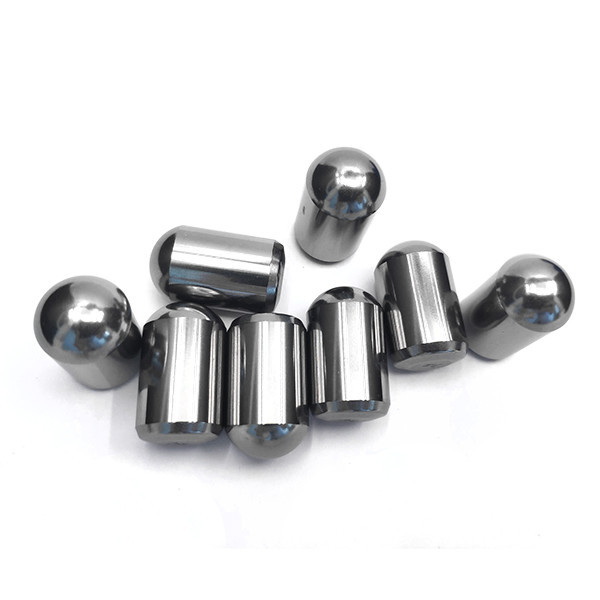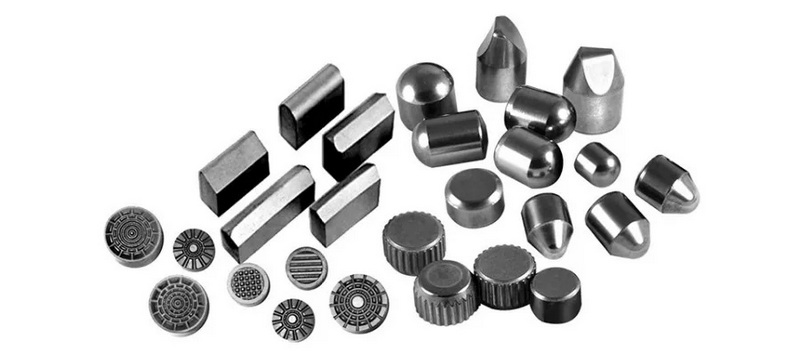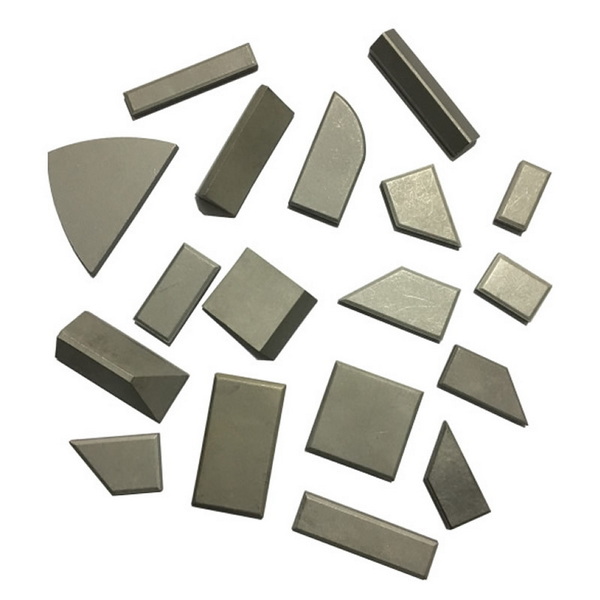Content Menu
● Introduction to Tungsten Carbide
● Properties of Tungsten Carbide
>> 1. Hardness and Density
>> 2. Thermal Stability
>> 3. Chemical Resistance
>> 4. Electrical Conductivity
● Applications of Tungsten Carbide
>> 1. Industrial Cutting Tools
>> 2. Mining and Construction
>> 3. Jewelry
>> 4. Military and Defense
>> 5. Medical Instruments
>> 6. Sports Equipment
● Cemented Carbide: The Engineered Material
● Manufacturing Challenges and Innovations
>> 1. Raw Material Sourcing
>> 2. Additive Manufacturing
>> 3. Nanostructured Carbides
● Environmental and Economic Impact
● Future Prospects
● Conclusion
● FAQ
>> 1. Why isn't tungsten carbide classified as an element?
>> 2. Can tungsten carbide rust or tarnish?
>> 3. How does tungsten carbide compare to titanium carbide?
>> 4. Is tungsten carbide toxic?
>> 5. What is the lifespan of a tungsten carbide tool?
● Citations:
Tungsten carbide, often referred to simply as carbide, is a material that has garnered significant attention due to its exceptional hardness and durability. It is widely used in various industrial applications, including cutting tools, abrasives, and even jewelry. However, there is often confusion about whether tungsten carbide is a compound or an element. In this article, we will delve into the nature of tungsten carbide, its properties, and its applications, while also addressing common misconceptions.

Introduction to Tungsten Carbide
Tungsten carbide is a chemical compound formed by combining tungsten (W) and carbon (C) atoms. Its chemical formula is WC, indicating that it consists of equal parts of tungsten and carbon. This compound is not an element but rather a carbide—a class of compounds where carbon bonds with metals or metalloids. The synthesis of tungsten carbide typically involves reacting tungsten metal with carbon at high temperatures (1,400–2,000°C) in a hydrogen atmosphere to prevent oxidation.
The material's discovery dates back to the late 19th century, but its industrial use began in the 1920s when German scientists developed cemented carbide by combining tungsten carbide with cobalt. Today, it is a cornerstone of modern manufacturing due to its unparalleled mechanical properties.
Properties of Tungsten Carbide
1. Hardness and Density
Tungsten carbide is renowned for its exceptional hardness, which is comparable to corundum (α-Al₂O₃) and approaches 80–90% of diamond's hardness. It has a Mohs hardness of 9 and a Vickers hardness of ~2,600 HV, making it suitable for applications requiring high wear resistance. Additionally, its density of 15.6 g/cm³—nearly twice that of steel—contributes to its resistance to deformation and impact.
2. Thermal Stability
Tungsten carbide retains its strength even at temperatures exceeding 600°C, with a melting point of approximately 2,870°C. Its low thermal expansion coefficient (5.5 × 10⁻⁶/K) ensures dimensional stability under extreme heat, making it ideal for high-speed machining tools.
3. Chemical Resistance
The compound is resistant to most acids, including hydrochloric and sulfuric acid, at room temperature. However, it reacts with fluorine gas at ambient conditions and chlorine above 400°C. This resistance to corrosion makes it valuable in chemical processing equipment.
4. Electrical Conductivity
Unlike pure metals, tungsten carbide is a poor electrical conductor. This property is leveraged in electrical discharge machining (EDM), where its non-conductive nature allows for precise shaping.
Applications of Tungsten Carbide
1. Industrial Cutting Tools
Tungsten carbide is the backbone of cutting tools such as drill bits, end mills, and lathe inserts. Its hardness enables efficient machining of hardened steels, titanium alloys, and other tough materials. For example, in the aerospace industry, carbide-tipped tools are used to shape turbine blades and engine components.
2. Mining and Construction
In mining, carbide-tipped picks and drill bits are essential for rock drilling and tunneling. The material's wear resistance reduces downtime in equipment maintenance.
3. Jewelry
Tungsten carbide rings are prized for their scratch-resistant surface and lustrous finish. Unlike traditional metals, they retain their polish even after years of daily wear.
4. Military and Defense
The compound's density and hardness make it ideal for armor-piercing projectiles. Tungsten carbide cores can penetrate armored vehicles more effectively than conventional steel.
5. Medical Instruments
Surgical tools made from tungsten carbide, such as scalpels and dental drills, offer precision and longevity. Its biocompatibility ensures safety in medical applications.
6. Sports Equipment
High-end cycling components, like chainrings and derailleur pulleys, utilize carbide coatings to reduce wear and enhance performance under stress.

Cemented Carbide: The Engineered Material
While pure tungsten carbide is brittle, combining it with a metallic binder like cobalt (6–12%) creates cemented carbide, a composite material. The production process involves:
1. Powder Metallurgy: Tungsten carbide and cobalt powders are milled into a homogeneous mixture.
2. Pressing: The powder is compacted into molds using hydraulic presses.
3. Sintering: The compacts are heated to 1,400°C in a vacuum furnace, causing the cobalt to melt and bind the carbide grains.
Cemented carbide balances hardness with toughness, enabling its use in applications like oil drilling bits and wear-resistant nozzles. Recent advancements explore replacing cobalt with nickel or iron to improve sustainability.
Manufacturing Challenges and Innovations
1. Raw Material Sourcing
Tungsten is a conflict mineral, with 80% of global reserves located in China. Ethical sourcing and recycling of tungsten scrap are critical to reducing environmental and geopolitical risks.
2. Additive Manufacturing
3D printing of tungsten carbide is emerging as a method to create complex geometries for customized tools. However, high sintering temperatures and porosity control remain technical hurdles.
3. Nanostructured Carbides
Nanoparticle-based tungsten carbide powders enhance hardness and fracture resistance. These materials are being tested for use in micro-drills and electronic components.
Environmental and Economic Impact
The production of tungsten carbide is energy-intensive, requiring approximately 50 kWh per kilogram. Recycling programs recover up to 95% of tungsten from scrap carbide, reducing reliance on mining. Additionally, stricter regulations on cobalt usage (due to toxicity concerns) are driving research into alternative binders.
Economically, the global cemented carbide market is valued at $23 billion (2025), with growth driven by demand in automotive and renewable energy sectors.
Future Prospects
1. Biomedical Implants: Research explores carbide coatings for joint replacements due to their wear resistance.
2. Space Exploration: Tungsten carbide components are being tested for spacecraft shielding against micrometeoroids.
3. Energy Storage: Carbide catalysts show promise in hydrogen fuel cells and battery technologies.
Conclusion
Tungsten carbide is unequivocally a compound composed of tungsten and carbon atoms. Its unique combination of hardness, thermal stability, and chemical resistance has cemented its role in industries ranging from manufacturing to healthcare. As technology advances, innovations in recycling, additive manufacturing, and nanotechnology will further expand its applications.

FAQ
1. Why isn't tungsten carbide classified as an element?
Elements are pure substances consisting of a single type of atom. Tungsten carbide (WC) contains two elements—tungsten and carbon—bonded chemically, making it a compound.
2. Can tungsten carbide rust or tarnish?
No, tungsten carbide is highly resistant to oxidation and corrosion, which is why it's popular in jewelry and marine applications.
3. How does tungsten carbide compare to titanium carbide?
Titanium carbide (TiC) is harder but less tough than tungsten carbide. TiC is often used in coatings, while WC is preferred for bulk components.
4. Is tungsten carbide toxic?
In solid form, it is inert and safe. However, inhalation of fine carbide dust during manufacturing can cause lung damage, requiring proper safety measures.
5. What is the lifespan of a tungsten carbide tool?
Depending on usage, carbide tools last 10–20 times longer than high-speed steel tools, significantly reducing replacement costs.
Citations:
[1] https://www.reddit.com/r/askscience/comments/9whr5d/is_tungsten_carbide_an_alloy/
[2] https://en.wikipedia.org/wiki/Tungsten_carbide
[3] https://hpvchemicals.oecd.org/ui/handler.axd?id=ed1c76bf-dad9-4baa-8d1b-70fed7f92862
[4] https://www.allied-material.co.jp/en/techinfo/tungsten_carbide/features.html
[5] https://www.carbide-usa.com/top-5-uses-for-tungsten-carbide/
[6] https://www.istockphoto.com/photos/tungsten-carbide
[7] https://www.istockphoto.com/photos/carbide
[8] https://cen.acs.org/materials/Chemistry-Pictures-Tungsten-carbide-slice/103/web/2025/02
[9] https://www.linkedin.com/pulse/tungsten-vs-carbide-whats-difference-zzbettercarbide
[10] https://www.linde-amt.com/resource-library/articles/tungsten-carbide
[11] https://www.freepik.com/free-photos-vectors/tungsten-carbide
[12] http://picture.chinatungsten.com/list-18.html
[13] https://www.hitechseals.com/includes/pdf/tungsten_carbide.pdf
[14] https://carbideprocessors.com/pages/carbide-parts/tungsten-carbide-grades.html
[15] https://www.harcourt.co/overview_documents/Tungsten%20Carbide%20data%20sheet.PDF
[16] https://pubchem.ncbi.nlm.nih.gov/compound/Tungsten-carbide
[17] https://eurobalt.net/blog/2022/03/28/all-the-applications-of-tungsten-carbide/
[18] https://ceramics.onlinelibrary.wiley.com/doi/full/10.1111/ijac.13350
[19] https://www.sollex.se/en/blog/post/about-cemented-tungsten-carbide-applications-part-1
[20] https://www.shutterstock.com/search/%22tungsten-carbide%22?page=3
[21] https://www.freepik.com/vectors/tungsten-carbide
[22] https://www.freepik.com/vectors/tungsten-carbide/5
[23] https://www.istockphoto.com/photos/tungsten-carbide-drill-bits
[24] https://www.hyperionmt.com/en/products/Carbide-Rolls/grade-data/
[25] https://konecarbide.com/tungsten-vs-tungsten-carbide-differences-explained/
[26] https://www.tungco.com/insights/blog/5-tungsten-carbide-applications/
[27] https://www.mdpi.com/1996-1944/15/7/2340
[28] https://www.carbideprobes.com/wp-content/uploads/2019/07/TungstenCarbideDataSheet.pdf
[29] https://carbideprocessors.com/pages/carbide-parts/tungsten-carbide-properties.html
[30] https://periodictable.com/Elements/074/pictures.html
[31] https://www.shutterstock.com/search/tungsten-carbide-tool?image_type=illustration
[32] https://www.shutterstock.com/search/tungsten
















